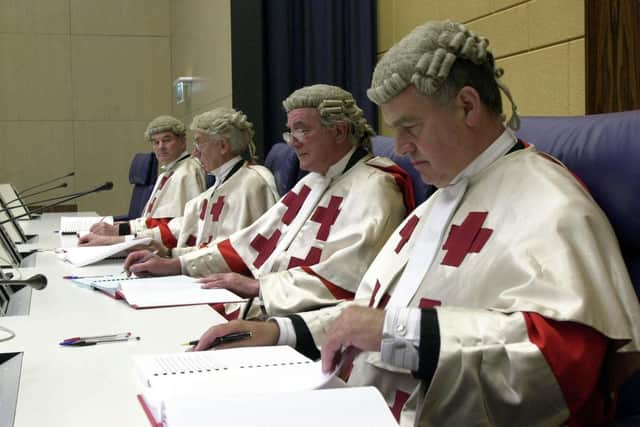What is the history behind Scotland's Not Proven verdict? Why does it exist?
and live on Freeview channel 276
In the early 1700, the country was rocked by a trial that changed the justice system forever.
After a funeral on May 9, 1728, a group of men in Forfar decided to partake in one too many drinks.
Advertisement
Hide AdAdvertisement
Hide AdJames Carnegie of Finhaven, Mr Lyon of Bridgeton and Charles Lyon, 6th Earl of Strathmore and Kinghorne.


After some heavy drinking in a local tavern, the men decided to call on Carnegie’s sister, Lady Auchterhouse, whose husband, like them, was an avid supported of the Jacobites.
Due to their level of drunkeness, it would be fair to say the men did not conduct themselves well in the household, particularly Bridgeton, who was said to have even ‘pinched’ the lady’s arm at one point.
After leaving, Bridgeton then pushed Carnegie into a ditch, covering him in mud from head to toe and making him absolutely furious.
Advertisement
Hide AdAdvertisement
Hide AdIn an attempt at revenge, Carnegie rushed at Bridgeton with his sword, ready to run him through, when Strathmore leapt in to stop him.
The sword struck Strathmore instead, going right through him, and he died just over two days later from the injury.
At this time in Scotland, there were two verdicts, proven and not proven. The jury merely had to assess the evidence and decide whether there was enough proof of the crime that had been alleged.
Now however, a different trial was underway. Carnegie was being defended by Robert Dundas, who did not believe that the jury system was suited to this crime.
Advertisement
Hide AdAdvertisement
Hide AdIt was clear that Carnegie had killed Strathmore, but he had not intended to, so was it murder?
If found guilty, Carnegie would be hanged for the crime, so for him, a lot was at stake, and the jury agreed.
They ended up asserting their “ancient right” to judge the case as a whole, rather than just the evidence presented, and found Carnegie not guilty.
From then on, there were three verdicts used, guilty, not guilty and not proven.
However, especially in more recent years, there has been more and more calls to eliminate the three verdict system, specifically getting rid of ‘not proven’.